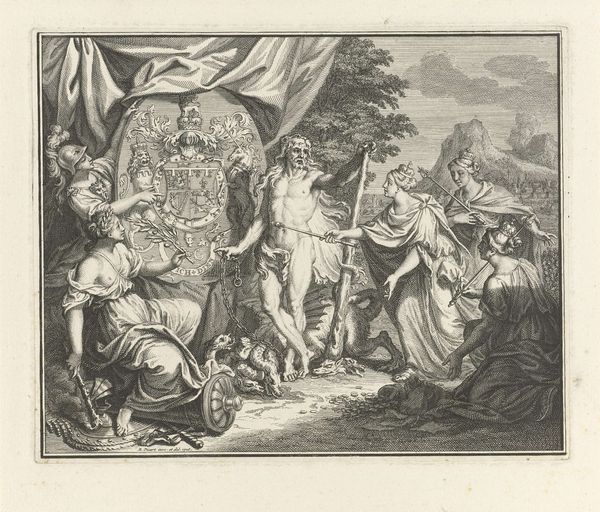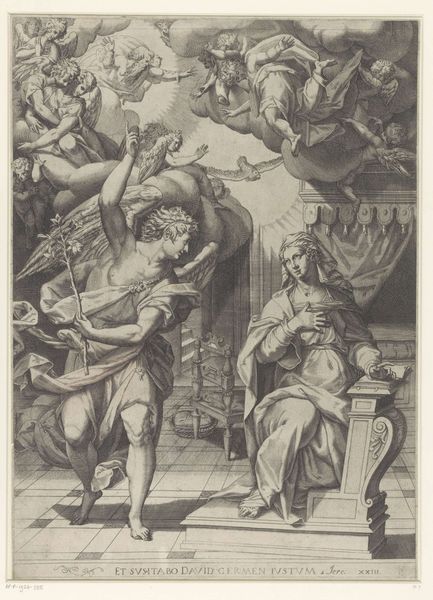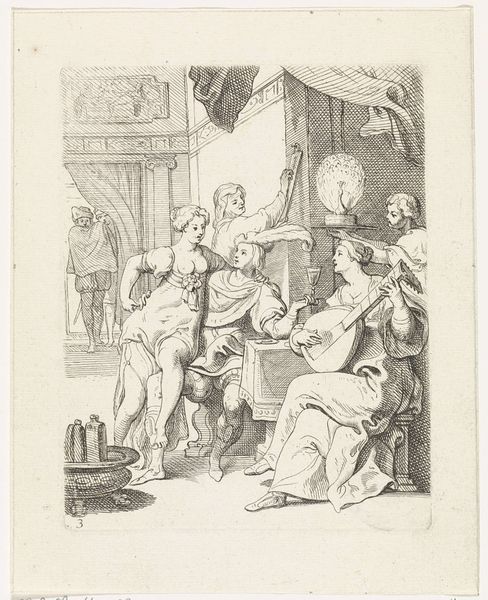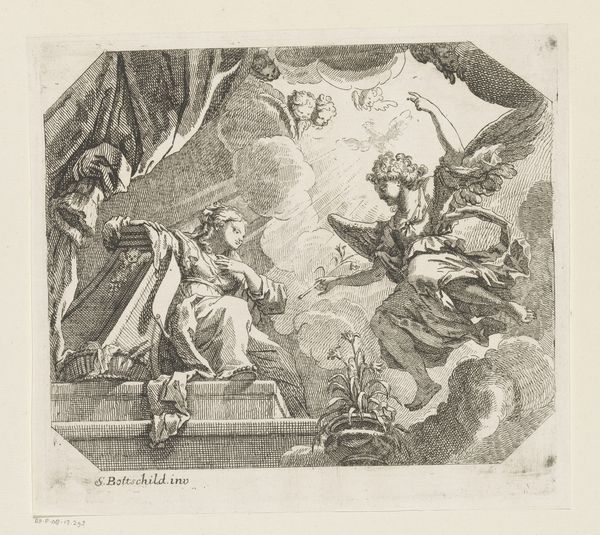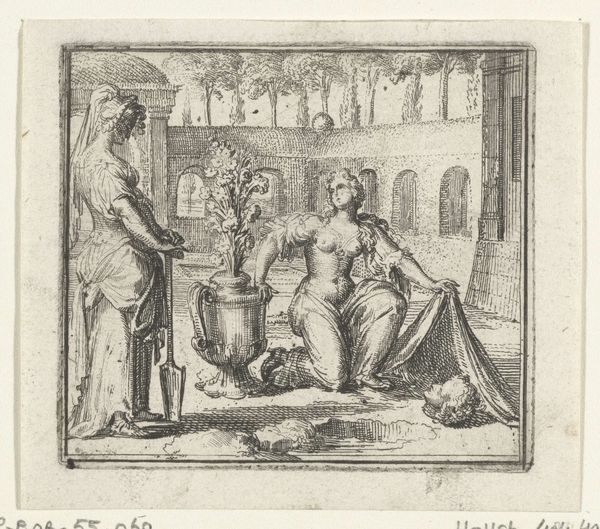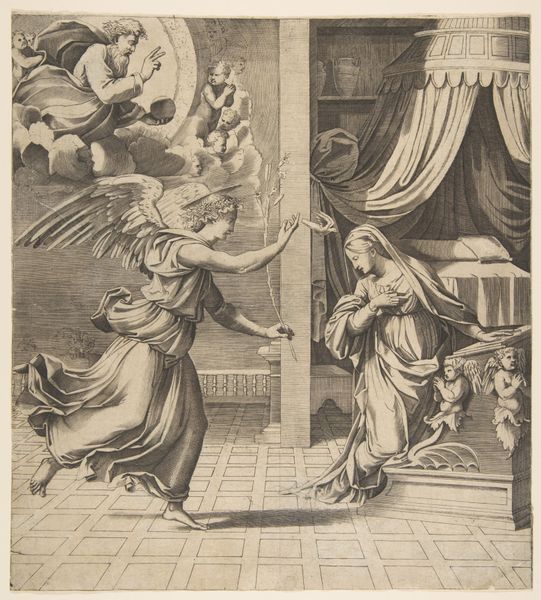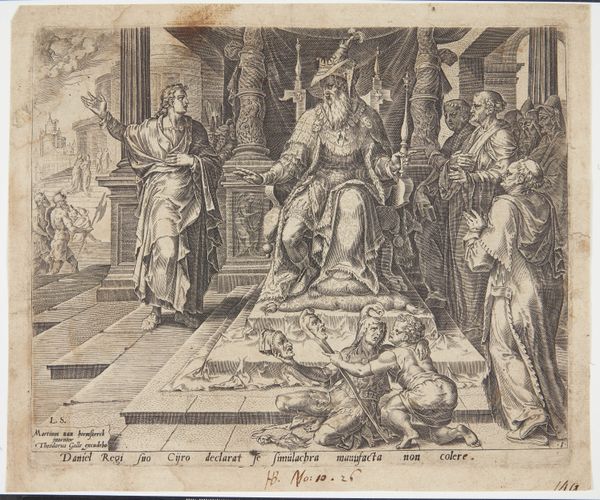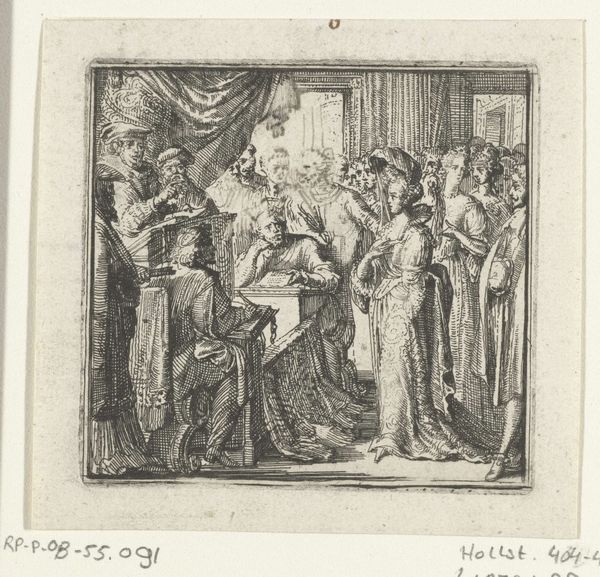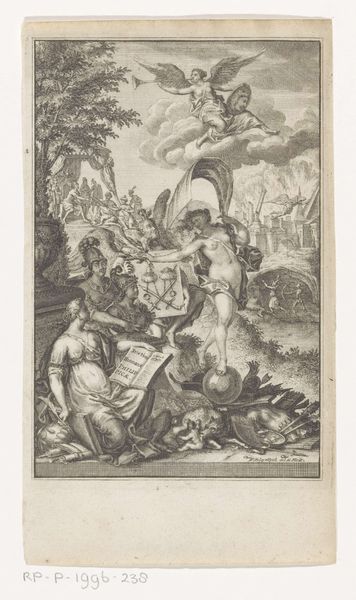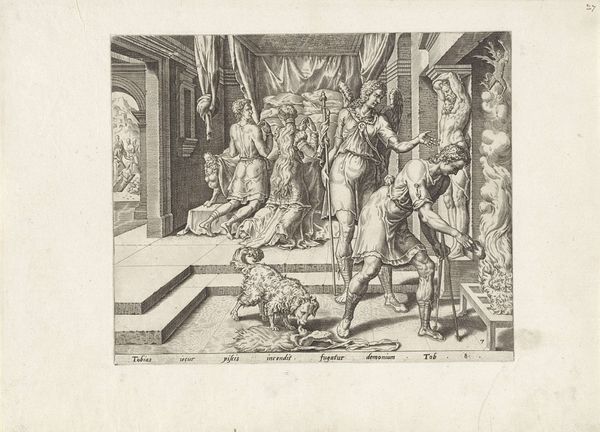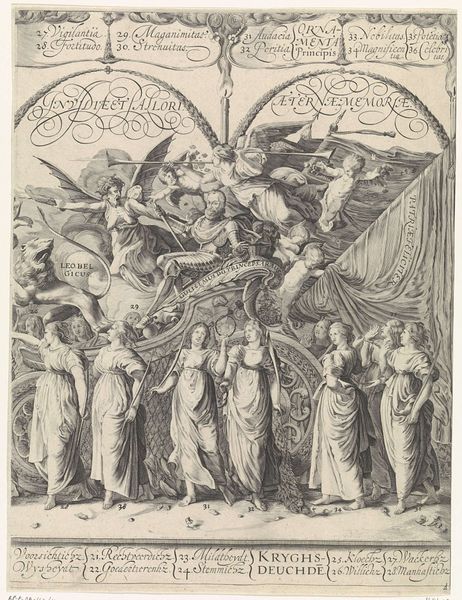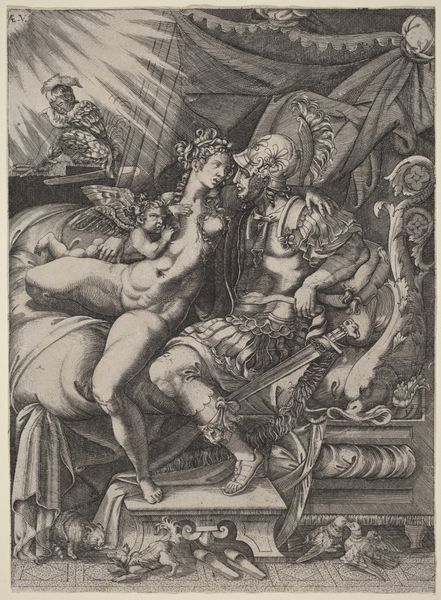
print, etching
#
narrative-art
#
baroque
# print
#
etching
#
figuration
#
history-painting
Dimensions: height 75 mm, width 78 mm
Copyright: Rijks Museum: Open Domain
Editor: This etching by Romeyn de Hooghe from 1697 is an illustration for Boccaccio's Decameron, and it has such a formal, stage-like quality. It's like a scene frozen in time. What do you see when you look at this work? Curator: What strikes me is the power dynamic at play. The seated man, presumably a ruler given his elevated position and attire, holds a clear position of authority. But, observe the woman. How would you describe her stance, her expression? Editor: She looks almost…pleading? Like she's trying to reason with him. Her posture is less rigid, more…expressive. Curator: Precisely! Consider the historical context. The Decameron, though a collection of witty and often bawdy tales, offered social commentary. What role might women have played in such a narrative landscape at the time? Is there anything else that may highlight a position in the work? Editor: Well, if she's pleading, it suggests she lacks power, even within this scene. And it’s intriguing that De Hooghe chose to depict this moment – perhaps hinting at underlying tensions within the power structure. I wonder what position the dogs occupy and represent, one lying beneath the queen’s skirt and another right next to the man at the throne. Curator: Yes, absolutely. And consider the very act of illustrating the Decameron during this period. It could be seen as a subtle act of rebellion against rigid societal norms, especially when considering the book's focus on human desires and flaws and looking closer to intersectional feminist theories. Now, how might this interpretation resonate with contemporary issues of gender and power? Editor: That's really insightful. It makes you think about how far we've come, but also how some power dynamics still persist. Looking at art as a reflection of these dynamics makes it so much more relevant. Curator: Indeed. Art provides a lens through which we can examine and critique our social structures and inequalities, allowing us to engage in more meaningful conversations.
Comments
No comments
Be the first to comment and join the conversation on the ultimate creative platform.

